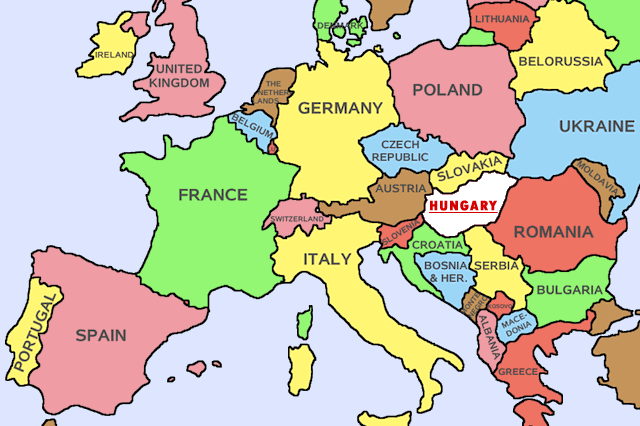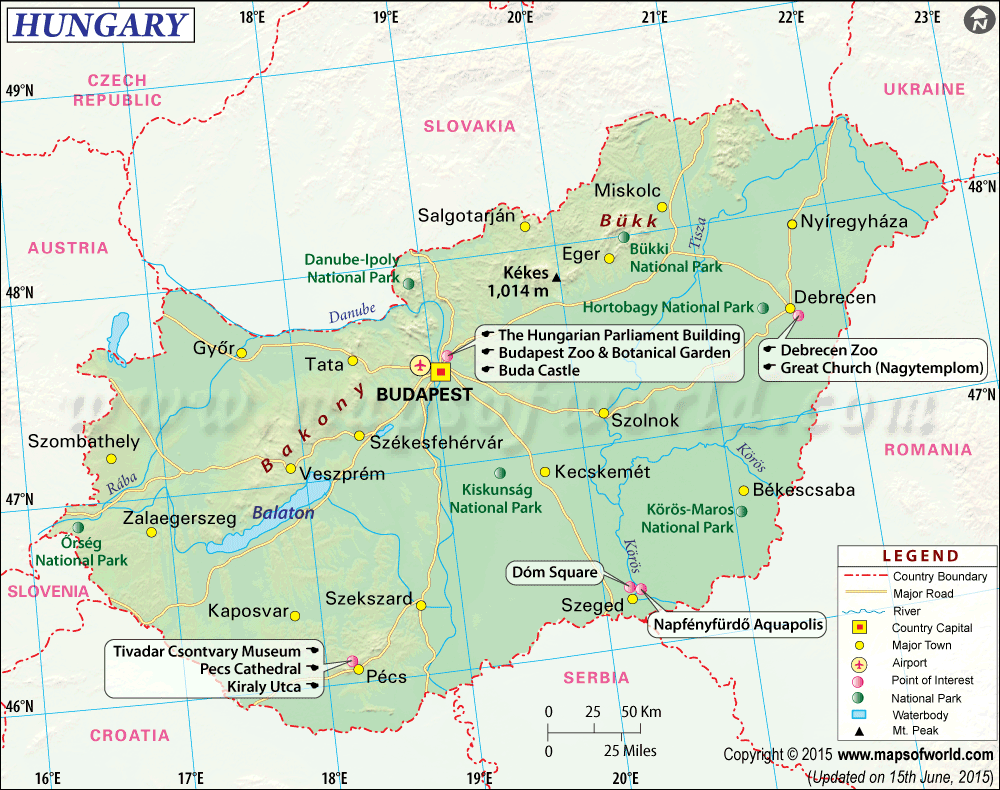
Hungary's history in a nutshell
This country has more than a 1000 years old history, and it was really full of happenings, battles, kings, allies and enemies and sometimes peaceful years. Here you can get a quick picture about the main events led the country and its people to be as they are today.
Hungarians were nomadic people and believed to have moved to the Carpathian basin from east, somewhere around the Ural hills. Under the leadership of Árpád, Hungarians population take over the land.
In 895, King Stephen (St. Stephen I.) founded the state of Hungary, and accepted the catholic religion as standard. In 1000 Stephen was crowned the Holy Crown of Hungary and blessed by the Pope. The crown is now displayed in the building of Parliament.
In 1241-2142 the invasion of the Mongols made serious destruction in the country, and half of the population were killed or deported as slaves (1 million people). After the invasion King Béla ordered the construction of a strong stone castle system to defend the country by further attacks. The second Mongolian strike was stopped at Pest by the royal army of the King thanks to these castles.
After the Turkish conqueror army defeated the Hungarian royal army at Mohács in 1526, the country split into three parts by 1541; the Hungarian Kingdom, the Habsburg dominion and the Turkish dominion. It took 150 years before the Hungarians could stand up to this situation, reunite and drive out the Turks. After the Turkish domination, the country became part of the Habsburg domination, but under the leadership of Ferenc Rákóczi II. Hungarians partly took back their independence, and signed the treaty of peace at Szatmár in 1711.
In the 19th century very important reforms were made. Hungarian became the official language of the country, and the language was renewed and elected to a literary level.
In 1848 there were independence revolutions in Europe, as well as in Hungary. The Magyars tried to remove the boundaries of the Habsburg domination. After the suppression of the revolution, the silent resistance made the nation stronger than ever before. In 1867, the Hungarian delegation, led by Ferenc Deák finally came to an agreement with the Habsburgs and so the dualistic system of the Austrian-Hungarian Monarchy was born and peace descended across the land.
In World War I Hungary was ally to Germany and Austria and had to send hundreds of thousands to die for foreign interests. In 1918 the Monarchy broke up, the first government was established and the country became the Republic of Hungary. After losing the war, the allied Atlantic countries over ran Hungary and by the Treaty of Trianon split up the country. The country of more than 20 million became the small country of less than 8 million. Hungary was now the form we know today.
World War II brought more tribulationsto the people of Hungary. Fighting by the Germans against the Soviets wasn't a good idea. As the government tried to change sides to the allied Atlantic countries (Entente) Germans over ran the country and deposed the government to their nationalist allies. Hundreds of thousands died during the wars or were deported to German concentration camps.
After the Germans were beat by the Entente, Soviets took over the country, drove out the Germans, and stayed for 44 years. In 1956 the people tried to force the leadership to stop this domination, and dictatorship by the soviets, but the attempt was unsuccessful and punished mercifully. However it did have some effects on the government and some concessions were made. The soviet domination lasted until 1989, when Hungary finally became an independent democracy.
In 1999 Hungary joined the NATO, and in 2004 the European Union.
(Source: Wikipedia)
 Heart of Europe |  Austro_Hungary_Empire 1914 |  Hungrian Serbian border |
|---|---|---|
 Hungarian map |  Europe |  Hungarian Slovakian Borders |
 Easy to reach your destnation of abroad |  Hungarian Romania Border |  Close borders To Hungary |
 The best Medical in Europe |
Facts about Hungary
What is the capital of Hungary ?
The capital of Hungary is Budapest, which in the modern day is consistently ranked among the most beautiful and livable cities on the European continent. Budapest is the center of Hungary’s burgeoning tourist industry, and it sees more tourists every year than the number of people actually living within it
What is the total population of Hungary ?
Hungary is home to nearly 10 million people, about a third of whom live in Budapest or in one of its extensive suburbs. Due to the many border changes that have taken place in Central Europe, there are also several million ethnic Hungarians that live in neighboring countries.
What languages are spoken in Hungary ?
The overwhelming majority of Hungarians speak the Hungarian language, as do millions of ethnic Hungarians living elsewhere, making it one of the most widespread non-Indo-European languages on the continent. Interestingly, Hungarian is not closely related to the languages of surrounding countries and has more in common with the Finnish and Estonian languages. There are also many wild theories about the roots of the Hungarian language, including a well-known hypothesis that it is descended from ancient Sumerian (although most scholars doubt this).
What is the national religion in Hungary ?
Hungary does not have an official religion, but the majority of the population (around 75%) is Christian in some form, the majority of those being Roman Catholics. Many of the rest are not religiously affiliated. There was once a sizable population of Jewish people in Hungary, but most of them were driven off or killed during the Holocaust in the mid-twentieth century. Today, a much smaller community of Jews remains religiously active in Budapest.
What countries border Hungary ?
Present-day Hungary is bordered by Austria, Croatia, Romania, Serbia, Slovakia, Slovenia, and Ukraine. It is a land-locked country but occupies a strategically important region of relatively flat land straddling the more mountainous regions of Central Europe.
How big is Hungary ?
Hungary takes up an estimated 93,030 square kilometers (or about 35,920 square miles), which all told is a bit smaller than the U.S. state of Indiana. Hungary once took up much more territory, including some Mediterranean coastline, back when it was part of the Austro-Hungarian Empire.
What was the Austro-Hungarian Empire ?
The Austro-Hungarian Empire, sometimes simply referred to as Austria-Hungary, was a dual monarchy that reigned over a large area in Central Europe for more than 50 years. It was formed in 1867 when the royal family that ruled the Austrian Empire, the Habsburgs, agreed to share sovereignty equally with a separate Hungarian state (this was done to pacify Hungarian nationalism within the Austrian Empire, as the Habsburgs’ power had been weakening). Although originally intended as a temporary compromise, the dual kingdoms together formed a major power in Central Europe and ruled for the next half-century. This empire was eventually toppled during World War I, and the nation of Hungary was not able to get back on its feet again before being occupied by the German Nazis and later by Soviet forces. Despite attempts to break free from Soviet rule (most famously during the 1956 Hungarian Revolution), Hungary would not be a sovereign state again until 1989.
What was the 1956 Hungarian Revolution ?
The Hungarian Revolution was an incident in Soviet-controlled Hungary during which demonstrators briefly overthrew the communist government and, against all odds, nearly established a democratic republic. The movement was quickly and brutally put down by Stalinist troops invading from Russia, but has since become an event of historical importance and a point of pride for Hungarian citizens. At the time it occurred, 1956, Western countries like the United States were wrapped up in the Suez Crisis and decided not to intervene when the U.S.S.R. moved to crush the Hungarian rebels. In retrospect, it is seen to have had a multifaceted outcome, solidifying Stalin’s hold on Central Europe while simultaneously stirring doubts in the minds of Communist followers worldwide.
What is the current form of government in Hungary ?
Today, Hungary is a fully-functioning parliamentary republic. It was one of the first states in the Soviet Bloc to peacefully break away from the U.S.S.R. during the Cold War thaw in the late 1980s and early 1990s. Unlike with the 1956 Hungarian Revolution, there was no violence in the transition, and the new republic was able to orient itself within a few years. Hungary’s change in governmental and economic structures is considered to be one of the earliest cracks in the Iron Curtain, and led the way for many other countries to do the same

